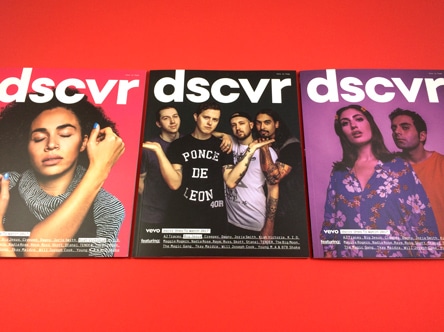Top 10 Printing Industry Trends: Discover the Future


As we navigate through the digital age, where immediate access to information becomes more effortless and consumer demands evolve, the print industry retains its relevance by integrating new technologies, such as QR codes, and responding creatively to these shifts in behaviour. The industry saw major transitions in recent years but continues to show resilience and adaptability, constantly reinventing itself as technology advances.
This blog post thus sheds light on the top 10 printing industry trends shaping the future of the print business. We'll delve into the rise of on-demand printing, sustainability practices, digital printing advancements, product personalisation, and how AI and machine learning are revolutionising printing processes.
These trends are set to redefine the industry, offering both opportunities for growth and challenges that demand innovative solutions. So let’s get started!
Why Should You Stay Updated With Printing Industry Trends?
Keeping abreast with the latest industry trends allows printing businesses to anticipate changes, adapt strategies, and stay competitive in a fast-paced, evolving industry. Understanding these trends in the print industry provides insights into changing customer demands, technological developments, and market dynamics.
With this knowledge, businesses can make informed decisions, seize new opportunities, and defy potential threats. Staying updated also ensures survival, competitiveness, and growth in a constantly progressing print industry.
What Are the Top 10 Printing Industry Trends?
The printing industry continues to evolve dynamically, shaped by new technologies, consumer preferences, and sustainability considerations, driven by digital transformation. There are several top printing industry trends available today. Let's delve deeper into each of these trends, understanding how they shape printing's future landscape.
1. Print on Demand (POD)
Print-on-demand (POD) is a transformative trend in the printing industry. This model allows the printing of customised items as and when orders come in, eliminating the need for bulk production and ample inventory storage. The primary appeal of this trend lies in its ability to create personalised, unique products without substantial upfront investment.

Advantages of POD include:
- Lower Costs: Traditional print methods involve high setup costs. POD allows for a cost-effective model by printing only what is needed, reducing warehousing and inventory management costs.
- Waste Reduction: Printing in bulk inevitably results in unsold items, leading to unnecessary paper waste. The POD model avoids such waste by printing only what is sold.
- Quick Turnaround Time: By eliminating the need to manufacture and store large volumes, POD drastically shortens the time from order placement to delivery.
- Creative Freedom: With no requirement to produce in bulk, consumers have more creative freedom to design and print unique, individual items.
Supported by industry statistics, the Print-on-demand industry is expected to witness exponential growth, reaching a value of $45.6 billion by 2031. Clearly, as a trend, POD shows no signs of slowing down.
2. Eco-friendly Printing and Sustainability
In the face of increasing environmental awareness, eco-conscious practices are no longer just a trend but an essential element of the modern print industry. Eco-friendly printing and sustainability ensure that the planet's valuable resources are not exploited at the cost of business operations.
Advantages of Eco-friendly and sustainable printing include:
- Recycled Materials: Using recycled paper and other eco-friendly materials helps minimise waste and reduce the demand for virgin resources, supporting a more sustainable approach to printing.
- Vegetable-Based Inks: Switching to vegetable-based inks instead of traditional petroleum-based ones reduces harmful emissions and contributes to a cleaner, more sustainable production process.
- Energy Efficiency: Adopting energy-efficient printing technologies and practices helps lower energy consumption, reducing the overall carbon footprint of the printing process.
- Waste Reduction: Sustainable printing involves reducing waste through better planning, recycling excess materials, and minimising scrap, contributing to a more eco-conscious production cycle.
Businesses that demonstrate a commitment to reducing their environmental footprint are predicted to gain a competitive edge and gain more market share as consumers demand more responsible behaviour from their vendors.
3. Digital Printing Advancements
Digital printing technology has recently evolved significantly, quickly becoming a preferred choice for commercial and individual needs. This is primarily due to its unparalleled quality, speed, variety, and output expansion, which are better than those of analogue printing.
To better understand the difference between the two, check out the below table:
| Analogue Printing | Digital Printing |
| Traditional methods use high-powered presses and ink plates. | Uses digital files and inkjet technology for printing. |
| Time-consuming setup and production process. | Fast and efficient print production. |
| Suitable for mass production. | Ideal for individual or small-batch printing. |
| Limited customisation options. | Highly flexible, enabling personalisation and customisation. |
While analogue printing still exists, its growth rate is expected to be only 0.8% by 2027. In contrast, the digital printing market is expected to grow by 5.7% and reach an estimated value of $189.8 billion by 2027.
4. Product Personalisation
Product personalisation is another major trend driving the variable data printing industry. As designing and shipping custom products becomes easier and faster, people now prefer personalised items over mass-produced, generic counterparts.
Key reasons why product personalisation is trending:
- Uniqueness: Personalisation allows consumers to express their unique identities or creative ideas through print products, differentiating them from mass-produced goods.
- Emotional Connection: Customising a product can create an emotional connection to the item, making it more meaningful for the consumer.
- Value for Money: Customers perceive personalised products as of higher value, resulting in increased willingness to pay.
- E-commerce Impact: Online shopping platforms have fueled the growth of product personalisation. Customers can preview their personalised designs before purchase, improving the shopping experience.
This trend is here to stay as digital printing advancements further boost customised product creation, making it an enjoyable process for customers.
5. Artificial Intelligence and Machine Learning in Printing
Incorporating Artificial Intelligence (AI) and Machine Learning (ML) is transforming the commercial printing industry. From automating design processes to cutting manual tasks and time wastes, AI and ML contribute significantly to enhancing the customer experience.
Here’s how both of them help:
- AI-Driven Workflow Efficiency: AI-powered automation streamlines print workflows, reducing manual errors and improving resource allocation, leading to faster and more efficient production.
- Personalised Marketing: Machine learning algorithms analyse customer data to create personalised print materials, enhancing targeted marketing efforts and increasing customer engagement.
- Enhanced Print Quality: AI-based image processing techniques automatically adjust colours, resolutions, and sharpness, ensuring high-quality print for every job.
- Predictive Equipment Maintenance: Machine learning algorithms monitor equipment performance in real-time, predicting maintenance needs and preventing costly breakdowns by addressing issues before they arise.
AI and machine learning have revolutionised various aspects of print production, bringing significant efficiency to processing times and increasing overall profitability.
6. Smart Factory Technologies
Harnessing innovative factory technologies has become a cornerstone for modern print businesses. It drives efficiency, scalability, and agility in print production processes, helping businesses thrive amidst industry changes.
The benefits of Smart Factory Technologies include:
- Automation: Robotics and automated systems streamline printing workflows, reduce manual labour, and increase production throughput.
- IoT integration: Internet of Things devices monitor equipment performance and gather real-time data, enabling predictive maintenance and optimising resource utilisation.
- Data analytics: Advanced analytics tools analyse production data to identify inefficiencies, optimise workflows, and improve decision-making.
- Agile manufacturing: Flexible production lines and adaptive processes enable quick adjustments to meet changing customer demands and market trends.
By applying innovative factory technology to their operations, print businesses can optimise production, reduce waste, minimise downtime, and ultimately improve profitability.
7. Web-to-Print Solutions
Web-to-print solutions are gaining popularity, providing customers with a seamless experience where they can create, edit, and order print products directly from their web browser.

Here’s how this trend works:
- Democratising Design: Web-to-print platforms allow customers to easily access design tools, enabling them to create customised print materials without needing professional design expertise.
- Global Reach: Print businesses can expand their geographical reach by offering online storefronts, allowing customers to order and receive products from anywhere in the world.
- Immediate Service: The web-to-print model caters to the modern demand for quick, digital-first services, ensuring customers can place orders and receive their products promptly.
- Convenience and Accessibility: By offering a fully digital experience, web-to-print solutions provide users with the convenience of designing, ordering, and shipping all from an online platform, making print services more accessible than ever.
This trend is not just a passing phase. It's an innovative approach to robust and sustainable growth.
8. 3D Printing Innovations
3D printing or additive manufacturing is an innovation transforming the printing industry and various sectors like healthcare, manufacturing, aerospace, and more. Its ability to create three-dimensional objects from digital design files allows printing with unprecedented complexity and precision.
Here are the benefits of 3D printing:
- Cost Efficiency: Reduces material waste and shortens manufacturing times, lowering production costs.
- Versatility: Capable of creating intricate and complex designs that are difficult or impossible with traditional methods.
- Sustainability: Uses only the required materials, promoting eco-friendly production practices.
- Rapid Prototyping: Speeds up the design-to-production cycle, helping businesses bring ideas to market faster.
Overall, 3D printing is set to capture new market opportunities and expand product offerings for printing businesses.
9. Special Effects and Finishings
Innovative special effects and finishings are revolutionising the print industry landscape to several extent.
Here's how:
- Tactile Finishes: Print businesses use tactile finishes like soft-touch laminates and textured surfaces to give customers a more engaging and sensory experience.
- Holographic Effects: Incorporating holographic effects into print materials adds a modern, eye-catching element that enhances visual appeal and attracts attention in competitive markets.
- Spot Varnishes: Spot varnishes are applied to specific areas of print materials to create a glossy contrast, highlighting key elements and adding a sophisticated touch to designs.
- Embossing: Embossing techniques raise certain parts of the design, giving print materials a three-dimensional quality that adds elegance and depth, improving overall aesthetic appeal.
By embracing these special effects and finishings, printing companies can differentiate themselves in the market and cater to the growing preference for unique and engaging printed materials.
10. Gen Z's robust impact
Gen Z is significantly impacting the print industry by bringing a fresh, tech-savvy approach to the workforce. Their digital expertise and innovative mindset are transforming print businesses, helping them adapt to new trends and meet customers' evolving demands through interactive content.
How Gen Z impacts the printing industry:
- Tech-Savvy Workforce: Gen Z's comfort with technology drives the adoption of digital workflows and IT services, improving operational efficiency and streamlining processes within print businesses.
- Innovation and Fresh Perspectives: Gen Z professionals bring new ideas and perspectives with their forward-thinking approach, encouraging innovation and modern solutions in print production and customer service.
- Sustainability Focus: Gen Z is passionate about sustainability and plays a key role in implementing eco-friendly printing practices, ensuring that businesses meet environmental goals.
- Enhanced Customer Satisfaction: By embracing digital tools and focusing on customer needs, Gen Z professionals help improve service delivery and customer experiences, making businesses more adaptable to evolving market demands.
Their integration of new technology and data analytics ushers in a transformative era in the printing industry.
Stay Ahead with Ex Why Zed: Printing Innovation at Its Best
Ex Why Zed is all about printing with a future-forward mindset. As the printing industry evolves, we stay ahead of the curve by embracing the latest trends and technologies, ensuring that your print materials reflect the most current innovations. From sustainable materials to advanced digital techniques, we're always exploring new ways to elevate your prints.
Whether you need business cards, brochures, or large-scale marketing materials, we have the expertise and tools to bring your vision to life. Reach out to us, and let's create something extraordinary together—on trend and beyond expectation.
Conclusion
The printing industry is adapting dynamically to the changing landscape by embracing technological advancements, accommodating changing consumer behaviour, and committing to environmental sustainability. As these trends evolve, businesses must understand their implications and maintain their competitive edge.
From on-demand printing and eco-friendly practices to digital advancements and artificial intelligence, staying on top of these printing operations trends can shape the future. These emerging trends influence business operations, market offerings, customer experience, and business growth.
By leveraging these top industry trends, print businesses can meet customer expectations, increase operational efficiency, achieve sustainable growth, and dictate industry direction.
Frequently Asked Questions
How is print-on-demand revolutionising the printing industry?
Print on Demand (POD) is revolutionising the printing industry by enabling businesses to offer quick-turnaround, highly customised print products without stockpiling inventory. This approach aligns perfectly with evolving customer demands for personalised products and faster delivery times.
What role does data analytics play in the modern printing industry?
Data analytics plays a critical role in optimising print operations in the modern printing industry. It provides actionable insights into customer behaviour, identifies inefficiencies in production processes, improves decision-making, and drives targeted marketing efforts, thereby enhancing overall business performance.
How can AI and machine learning enhance printing processes?
Artificial Intelligence (AI) and Machine Learning (ML) enhance printing processes by automating complex tasks, optimising print workflows, and improving quality control. These technologies allow real-time adjustments during printing and predictive maintenance, increasing efficiency and reducing costs.
What are the environmental benefits of eco-friendly printing?
Eco-friendly printing practices reduce the environmental footprint of the printing industry by utilising sustainable materials, implementing efficient printing processes, and minimising waste. This not only conserves natural resources but also promotes a healthier planet.
How does digital printing differ from traditional printing methods?
Unlike traditional analogue printing methods that require time-consuming setup processes and are suited for mass production, digital printing works with digital files, offering faster and more efficient print production. It's ideal for individual or small-batch printing and allows high flexibility for personalisation and customisation.

